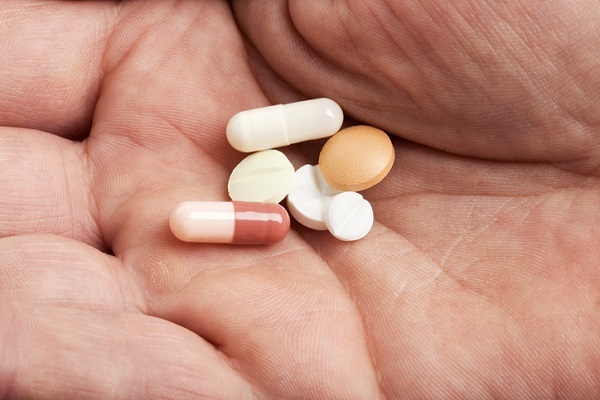ii view: AstraZeneca enters 'catalyst-rich period'
Manufacturing drugs within the USA and selling medicines in China and the emerging markets. We assess prospects for this FTSE 100 giant.
29th April 2025 16:02
by Keith Bowman from interactive investor

First-quarter results to 31 March
- Currency adjusted revenue up 10% to $13.59 billion
- Currency adjusted core earnings per share (EPS) up 21% to $2.49
Guidance:
- Continues to expect full-year revenue to increase by a high single-digit percentage
- Continues to expect core EPS for the full year to rise by a low double-digit percentage
Chief executive Pascal Soriot said:
"Our strong growth momentum has continued into 2025 and we have now entered an unprecedented catalyst-rich period for our company.
"Overall, we are making excellent progress toward our ambition of eighty billion dollars in Total Revenue by 2030."
- Invest with ii: What is a Managed ISA? | Open a Managed ISA | Transfer an ISA
ii round-up:
AstraZeneca (LSE:AZN) today reported increased sales and profits, driven by continued demand for the drug makers wide array of cancer medicines.
First-quarter currency-adjusted sales to late March climbed 10% to $13.59 billion, aiding a 21% rise in core earnings to $2.49 per share. Currency-adjusted cancer, or oncology sales during the period rose 13% to $5.64 billion. Astra continues to expect full-year revenues to increase by a high single-digit percentage, taking core earnings per share up by a low double-digit percentage.
Shares in the FTSE 100 mammoth rose 0.5% in afternoon UK trading having come into these latest results down by around a tenth over the last year. That’s marginally better than the decline at rival GSK (LSE:GSK) over the last year, although is in contrast to a near 4% rise for the FTSE 100 index.
AstraZeneca’s medicines focus on the areas of Oncology, Cardiovascular, Renal and Metabolic (CVRM) illnesses, as well as rare diseases.
CVRM sales, including the group’s Farxiga drug used to treat diabetes and heart and kidney diseases, rose 12% on a currency adjusted basis to $3.25 billion. Rare disease revenues fell 3% to $2.04 billion.
Astra flagged five positive Phase III studies year-to-date, including most recently positive results for formulas to potentially treat breast cancer.
In the wake of recently announced US trade tariffs, and with 40% of 2024 sales made in the US, Astra underlined its 11 manufacturing plants in the country as well as planned investments for two research and development centres.
Broker UBS reiterated its ‘buy’ stance on Astra shares post the results. Second-quarter numbers are likely to be announced mid-to-late July.
ii view:
Headquartered in Cambridge in the UK, AstraZeneca employs over 90,000 people across more than 100 countries. The US accounted for most sales in 2024 at 40%, followed by China at 12%, the UK at nearly9%, and other various countries making up the balance. The FTSE 100 company continues to pursue a target of $80 billion in revenues by 2030 versus $54.1 billion in 2024.
For investors, potential trade tariffs on drugs not made in the US but imported into the country, as well as possible US government pricing pressures, are not to be overlooked. Investigations by Chinese authorities into Astra activities there are ongoing. Previous takeovers such as the $1.05 billion purchase of rare endocrine disease specialist Amolyt Pharma, are not without risk, while GSK shares currently sit on a forecast dividend yield of just over 4% compared with around 2.3% at Astra.
- Investment outlook as US/China force world to pick sides
- Insider: director buys FTSE 250 stock at ‘huge discount’
- Where to invest in Q2 2025? Four experts have their say
On the upside, cancer treatment sales remain buoyant, generating 42% of overall revenue in this latest quarter. Drug development programmes continue, with Astra’s experience with diabetes offering insight into potential weight management medicines. Sales on a geographical basis are diverse, with sales to emerging markets and excluding China coming in at close to 16% of overall sales in this latest quarter, while takeovers such as the group’s 2021 purchase of rare disease focused Alexion have expanded the group’s diversity of drug treatments.
In all, and despite ongoing risks, Astra’s 2030 targeted sales ambition plus a consensus analyst fair value estimate above £130 per share, are likely to see investors remain supportive of this UK headquartered pharma giant.
Positives:
- Targeting a potential 20 new medicines by 2030
- Acquisitions adding to diversity of drug treatments
Negatives:
- Involved in various legal proceedings considered typical to its business, including litigation and government investigations
- Currency movements can hinder
The average rating of stock market analysts:
Buy
These articles are provided for information purposes only. Occasionally, an opinion about whether to buy or sell a specific investment may be provided by third parties. The content is not intended to be a personal recommendation to buy or sell any financial instrument or product, or to adopt any investment strategy as it is not provided based on an assessment of your investing knowledge and experience, your financial situation or your investment objectives. The value of your investments, and the income derived from them, may go down as well as up. You may not get back all the money that you invest. The investments referred to in this article may not be suitable for all investors, and if in doubt, an investor should seek advice from a qualified investment adviser.
Full performance can be found on the company or index summary page on the interactive investor website. Simply click on the company's or index name highlighted in the article.